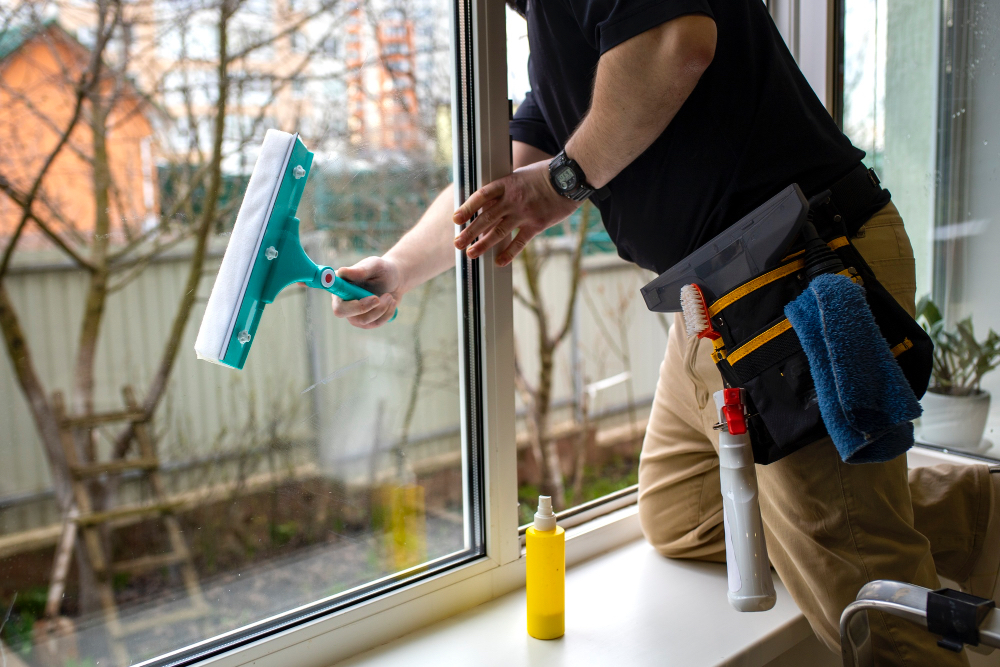Last updated on
Windows are an integral part of any home, providing natural light, ventilation, and aesthetic appeal. However, like all components of a house, windows have a lifespan and eventually require replacement. Recognizing when it’s time to replace your windows can save you from potential headaches such as energy inefficiency, drafts, and even structural damage.
In this comprehensive guide, we will delve into the various signs that indicate the need for window replacement, empowering you to make informed decisions about maintaining your home.
Difficulty in Cleaning and Maintenance

As windows age, they may become increasingly challenging to clean and maintain due to accumulated dirt, grime, or mineral deposits. While regular cleaning is essential for preserving the appearance and functionality of your windows, persistent stains or buildup may indicate deeper issues that cannot be easily remedied.
If you find yourself spending excessive time and effort on window maintenance with unsatisfactory results, it may be more cost-effective in the long run to invest in replacement windows.
Modern replacement windows are designed with convenience in mind, featuring easy-to-clean materials and innovative designs that minimize maintenance requirements. By upgrading to low-maintenance windows, you not only save time and effort but also ensure that your windows remain in optimal condition for years to come.
Discovering a top-tier window replacement service is key to elevating your home’s aesthetics and energy efficiency. For unparalleled quality and customer satisfaction, explore esteemed providers like Renewal by Andersen.
Make sure to visit website, find testimonials from delighted clients, and embark on your journey to enhanced living. By choosing a reputable provider, you can rest assured that your window replacement project will be handled professionally and efficiently, with lasting results.
Visible Damage and Decay
One of the most obvious indicators that it’s time to replace your windows is visible damage and decay. This can manifest in several ways, including rotting wood frames, cracked glass, or gaps between the frame and the wall.
Such damage not only detracts from the appearance of your home but also compromises its insulation and security. If you notice any signs of deterioration during your regular inspections, it’s crucial to address them promptly to prevent further issues.
Furthermore, aging windows may become difficult to operate, with frames warping or hardware failing over time. If you struggle to open or close your windows or if they no longer stay open without support, it’s a clear indication that replacement is necessary. Ignoring these issues can lead to inconvenience and potential safety hazards, especially in emergencies where quick evacuation may be required.
Rising Energy Bills

Another telltale sign that your windows need replacing is a noticeable increase in energy bills. As windows age, their efficiency diminishes, allowing air to escape and outdoor elements to infiltrate your home.
This compromises the effectiveness of your heating and cooling systems, leading to higher energy consumption and increased costs. Conducting an energy audit or simply paying attention to fluctuations in your utility bills can reveal whether your windows are contributing to excessive energy usage.
Moreover, outdated windows may lack modern features such as low-emissivity coatings or multiple panes of glass, which are designed to improve insulation and reduce heat transfer. By investing in energy-efficient replacement windows, you not only save money in the long run but also reduce your carbon footprint, contributing to a more sustainable lifestyle.
Drafts and Air Leaks
Drafts and air leaks are common issues associated with aging windows and can significantly impact the comfort and livability of your home. These drafts occur when gaps or cracks form around the window frames, allowing air to seep in from the outside.
Aside from compromising indoor temperature regulation, drafts can create cold spots near windows, making certain areas of your home uncomfortable during colder months.
To identify drafts, conduct a simple inspection by running your hand along the edges of your windows on a windy day. If you feel a noticeable breeze or if you notice curtains or blinds moving even when the windows are closed, it’s a clear indication of air leaks.
While temporary solutions like weatherstripping or caulking may offer some relief, they are not permanent fixes, and replacing the windows is often the most effective solution in the long term.
Excessive Noise Pollution
Windows plays a crucial role in sound insulation, helping to create a peaceful and quiet environment within your home. However, as windows age and wear out, they may become less effective at blocking out external noise, resulting in increased levels of noise pollution indoors.
If you find yourself constantly disturbed by traffic sounds, neighborhood activities, or other environmental noises, it may be time to consider replacing your windows with soundproof alternatives.
Modern replacement windows are designed with noise reduction features such as laminated glass and insulated frames, which help minimize sound transmission and create a more tranquil living space. By investing in these upgrades, you not only improve your quality of life but also enhance the resale value of your home, as prospective buyers are often willing to pay more for properties with superior sound insulation.
Faded or Damaged Window Treatments
The condition of your window treatments can also provide valuable insights into the state of your windows. Over time, exposure to sunlight and outdoor elements can cause curtains, blinds, or shades to fade, warp, or deteriorate. While this may seem like a minor aesthetic issue, it can indicate underlying problems with your windows, such as excessive UV exposure or inadequate insulation.
If you notice significant damage or discoloration in your window treatments, it’s worth inspecting the windows themselves to determine if replacement is necessary. Upgrading to new, energy-efficient windows can not only improve the aesthetics of your home but also prolong the lifespan of your window treatments by providing better protection against UV rays and outdoor elements.
TheTakeaway
Recognizing the signs that indicate the need for window replacement is essential for maintaining the comfort, efficiency, and aesthetics of your home. Whether you’re dealing with visible damage, rising energy bills, drafts, noise pollution, faded window treatments, or maintenance issues, addressing these issues promptly can help you avoid more significant problems down the line.
By investing in high-quality replacement windows, you not only enhance the value of your property but also improve your overall quality of life. So don’t wait until it’s too late—take proactive steps to assess the condition of your windows and invest in replacements as needed.
Table of Contents




